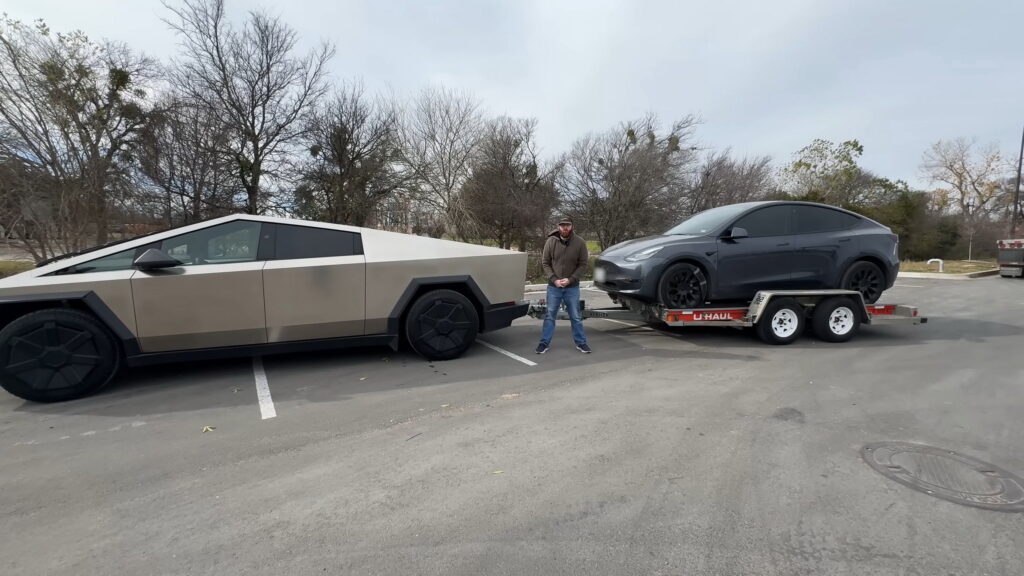A real owner speaks out about the experience of towing and charging with his Cybertruck
1 hour ago
 –>
–> 
–>
Tesla Cybertruck owners across the country are still figuring out what it’s like to live with these slab-sided stainless steel trucks day in and day out. In the case of one owner in Austin, Texas, towing with the Cybertruck has become his latest venture. The results of towing one Tesla with another reveal some intriguing insights about the Cybertruck itself.
The electric pickup truck boasts up to 11,000 pounds (4,990 kg) of towing capacity so it’s right up there with many gas-powered competitors. The big difference, of course, is that towing with an electric vehicle drastically diminishes range and charging stations aren’t as plentiful as gas stations. In an effort to provide the world with a bit more data about the Cybertruck towing experience, one owner named Ben did a test and filmed the entire thing.
He drove from a gas station just north of Austin to a Tesla Supercharger station about 55 miles (89 kilometers) away. Hooked up to his Cybertruck is a Tesla Model Y on a UHaul trailer, which combined represent roughly 6,600 pounds (2,994 kilograms).
advertisement scroll to continue
The vehicle automatically detects the trailer and readjusts the range estimate based on that load. Immediately, he notices how much louder the Cybertruck is with the trailer in tow. By the time he reaches his destination, he’s used 37 kWh worth of the battery.
Read: Tesla Cybertruck’s Range Falls 21% Short Of EPA Estimate In Real World Test
[embedded content]
That’s just under one-third of the total 123 kWh battery capacity of the Cybertruck. In other words, it appears that the truck would’ve gone about 165 miles (266 kilometers) with the Model Y in tow before needing to stop for a charge. Another potential issue pops up when he goes to charge the truck though.
Tesla doesn’t yet have any pull-through charging stations so there are only two ways to charge with a trailer. Option one is to remove the trailer and back into a space normally and option two is to drive up beside the charger and block a number of them for other patrons. Neither is ideal.
Interestingly, range estimation was actually quite good in this short out-and-back trip. Once the Cybertruck detected the load it estimated that it would arrive at the destination with 46% of its available charge. Instead, it arrived at 52%. Then, on the way back it estimated arriving with 24% but arrived with 25%. That indicates that the system might use a different algorithm than the one so many other Tesla owners complain about that often over-promises on range estimates.